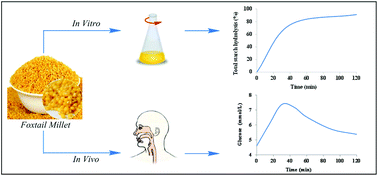In vitro starch digestibility and in vivo glycemic response of foxtail millet and its products
Abstract
Foxtail millet, as a leading variety in arid and semi-arid areas of Asia and Africa, can provide broad potential benefits to human health. However, its digestion properties have not been reported. So in this study, the in vitro starch digestibilities and in vivo glycemic indices (GI) of foxtail millet and pure millet products were investigated. The results showed that starch digestibility of the foxtail millet flour is obviously lower than that of wheat flour. However, deproteinization and heating significantly increased its rapidly digestible starch and decreased its slowly digestible starch and resistant starch. The GIs of pure millet products were in the following order: millet porridge (93.6 ± 11.3) > millet steamed bread (89.6 ± 8.8) > No. 1 millet pancake (75.0% millet flour and 25.0% extrusion flour, 83.0 ± 9.6) > No. 2 millet pancake (without extrusion flour, 76.2 ± 10.7) > cooked millet (64.4 ± 8.5). They were significantly positively correlated with the rapidly digestible starch (r = 0.959), degree of gelatinization (r = 0.967) and estimated glycemic index (r = 0.988). Both in vitro and in vivo tests suggested that boiling, steaming and extrusion enhanced the formation of digestible starch and subsequently increased the GI values. Additionally, the No. 1 millet pancake and cooked millet had a relatively gentle stimulation on β-cell. Therefore, foxtail millet, especially the cooked millet, may serve as a potential source of nutraceutical and functional food that could delay the development of type 2 diabetes.


 Please wait while we load your content...
Please wait while we load your content...